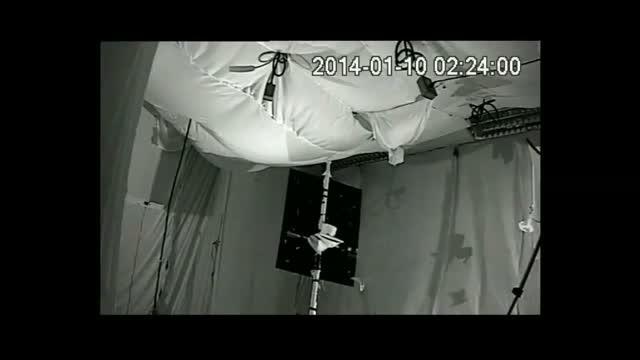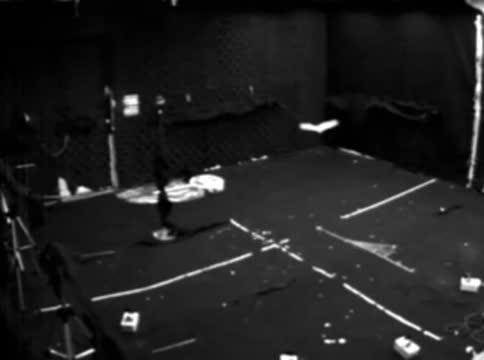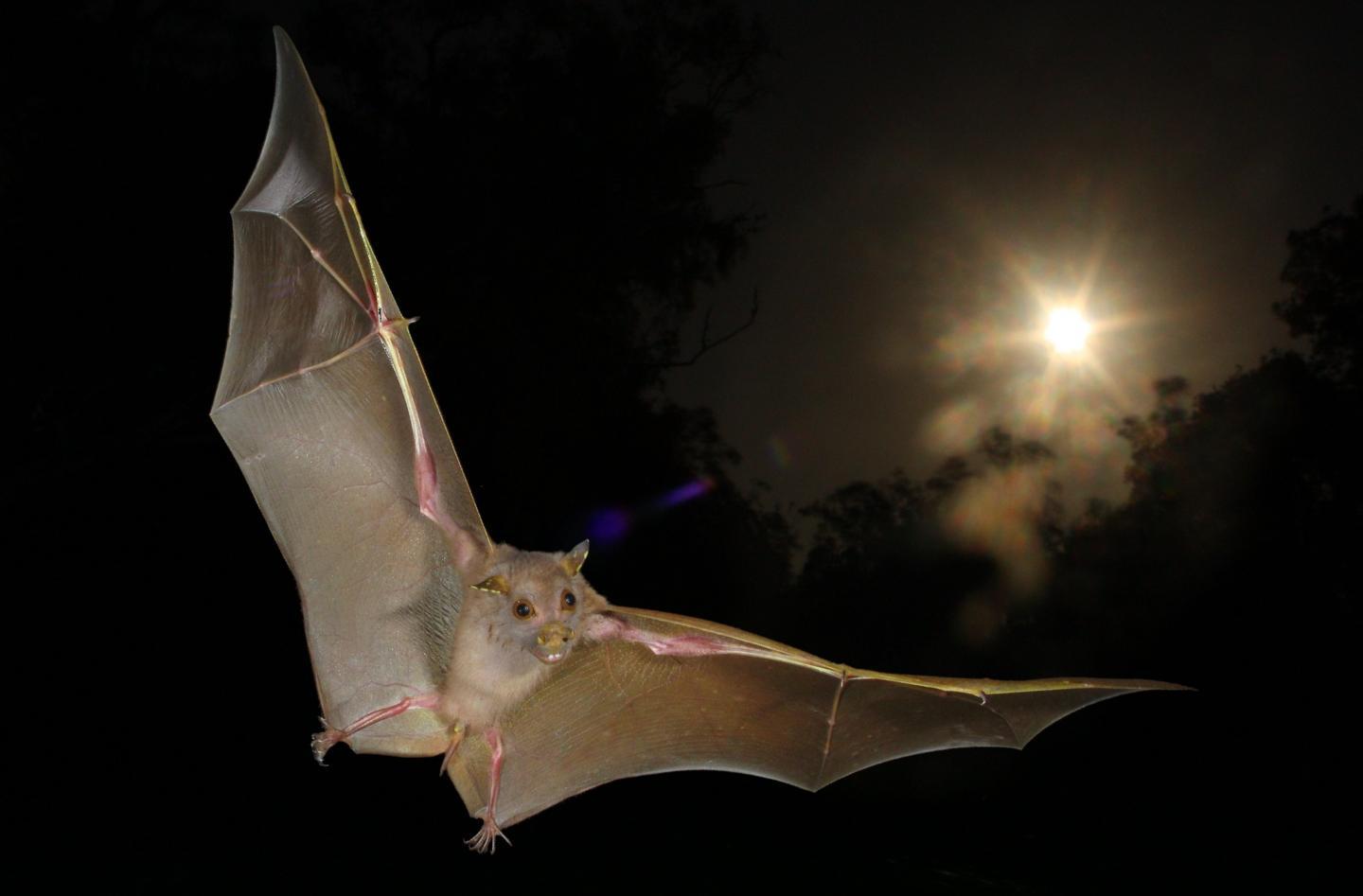The findings are interesting in light of earlier suggestions that echolocation may have evolved initially for bats to identify and avoid crashing into large objects such as cave walls, Boonman and Yovel say. The new discovery in fruit bats offers insight into how this sophisticated ability in other bats may have evolved over time, although it is unlikely that the laryngeal clicks of those other bats evolved directly from fruit bats' wing clicks. In fact, Yovel says, it's possible that echolocation in bats has independently evolved many times.
"When we study extant species of echolocating bats, we see a developed sensory system that has been adapted and improved over millions of years of evolution," Yovel says. "The rudimentary echolocation of the fruit bat is one example of how the first types of echolocation may have evolved."

A bat landing on the rewarded object in complete darkness (movie taken in IR). The movie shows that the bat has a general knowledge of the location of the object, but it cannot use echolocation to find the landing platform (white horizontal platform at the center of the black board) or estimate the distance to the object. The bat makes 3 attempts to land, but only lands on the board from which it was difficult for bats to reach the platform. For comparison see supplementary movie 2 which was taken in the light where the bat smoothly lands on the feeding platform at the first attempt. This movie also proves that bats could not rely on vision in the dark condition. The audio in the movie was not recorded in synchrony with the video. Because we did not synchronize audio recordings with the IR video (only with the high speed) we could not provide the accurate audio. We chose to add a representative audio track which was recorded in the same experiment and approximately at the same time order to give the reader a feeling of what clicking sounded like.
(Photo Credit: Current Biology, Boonman et al)

An Egyptian fruit bat (Rousettus aegyptiacus) lands on a 10cm diameter target when relying on echolocation.
(Photo Credit: Current Biology, Boonman et al)

In a discovery that overturns conventional wisdom about bats, researchers reporting in the Cell Press journal Current Biology on Dec. 4 have found that Old World fruit bats -- long classified as "non-echolocating" -- actually do use a rudimentary form of echolocation. Perhaps most surprisingly, the clicks they emit to produce the echoes that guide them through the darkness aren't vocalizations at all. They are instead produced by the bats' wings, although scientists don't yet know exactly how the bats do it.
(Photo Credit: Current Biology, Boonman et al.)
Source: Cell Press